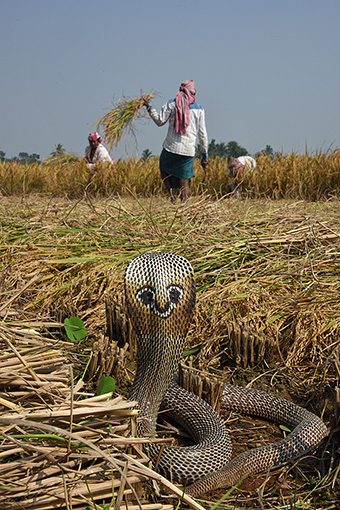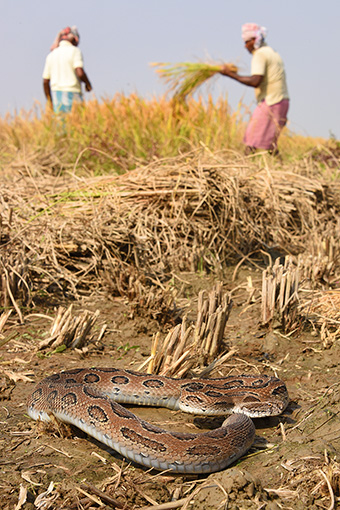BITES
Biodiversity Informatics and Technology Exchange for Snakebite Management [BITES]


Farmers in West Bengal are exposed to bite by venomous snakes when tending and harvesting their crops.
Photos by Wolfgang Wüster
About:
India has the globally highest annual death rate from venomous snake bites and in some states it is the largest contributor to mortality, exceeding even AIDS and malaria. Data on snakebite is significantly lacking from the north-eastern and Himalayan belt States, where the “Big Four” medically significant venomous snakes are replaced by different species of venomous snakes. This has serious consequences for the ability to treat cases of snakebite.
Clinical management of snakebites requires timely administration of antivenom (referred to in India as anti-snake-venom serum, or ASVS), neutralizing the life-threatening toxins in snake venom. However, venom composition varies both between and within species, and so the design and production of efficient antivenins depends on thorough understanding of venomous snake diversity and distribution. The resulting biological information and standards from this project will contribute to improving the outcome of snakebite and provide a baseline for future work.
This project was set up in 2013 with funding for four years from the European Union Seventh Framework Programme under the grant agreement number (PIRSES-GA-2013-612131). It continued with additional funding from the Bangor University ESRC Impact Acceleration Account, the Rufford Foundation, and contributions from volunteers organised through Captive and Field Herpetology.
Aims:
To address the lack of studies investigating the link between venomous snake systematics and regional venom variation in India To establish a collaborative network of experts based in the UK and India (taxonomists, molecular biologists, protein biologists, epidemiologists, clinicians and herpetologists) to enable co-ordination of methods and effort. To encourage early-career researchers to apply leading-edge techniques (eg the “omics”: genomics, transcriptomics, proteomics, antivenomics) as well as more traditional techniques in herpetological systematics, to solve the problem of snakebite in India.
For further information contact: a.malhotra@bangor.ac.uk




